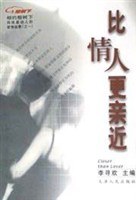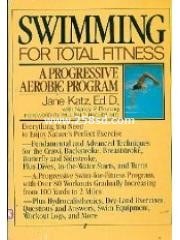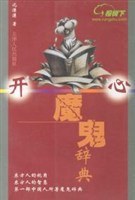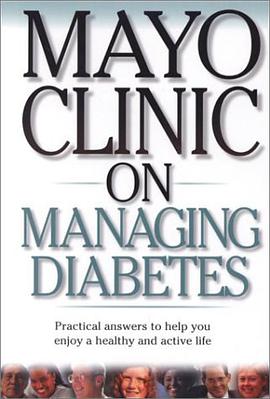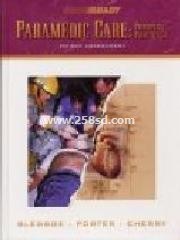

Book Info Univ. of North Texas, Fort Worth. Second textbook in this series providing paramedic students with the principles of patient assessment. Includes techniques of conducting a history and physical exam, and ways to integrate the techniques learned into real-life situations. Colorful format. Complete in five volumes. DNLM: Emergency Medical Services--methods. From the Inside Flap Series Preface Congratulations on your decision to further your EMS career by undertaking the course of education required for certification as an Emergency Medical TechnicianParamedic! The world of paramedic emergency care is one that you will find both challenging and rewarding. Whether you will be working as a volunteer or paid paramedic, you will find the field of advanced prehospital care very interesting. This textbook will serve as your guide and reference to advanced out-of-hospital care. It is based upon the 1998 United States Department of Transportation EMT Paramedic National Standard Curriculum and is divided into five volumes. The first volume is entitled Introduction to Advanced Prehospital Care and addresses the fundamentals of paramedic practice, including pathophysiology, pharmacology, medication administration and advanced airway management. The second volume, Patient Assessment, builds on the assessment skills of the basic EMT with special emphasis on advanced patient assessment at the scene. The third volume of the series, Medical Emergencies, is the most extensive and addresses paramedic level care of medical emergencies. Particular emphasis is placed upon the most common medical problems; respiratory and cardiovascular emergencies. Trauma Emergencies, the fourth volume of the text, discusses advanced prehospital care from the mechanism of injury analysis to shock/trauma resuscitation. The last volume in the series addresses Special Considerations/Operations including neonatal, pediatric, geriatric, home health care, and specially challenged patients, and incident command, ambulance service, rescue, hazardous material, and crime scene operations. These five volumes will help prepare you for the challenges of prehospital care. SKILLS The psychomotor skills of fluid and medication administration, advanced airway care, ECG monitoring and defibrillation, and advanced medical and trauma patient care are best learned in the classroom, skills laboratory, and then the clinical and field setting. Common advanced prehospital skills are discussed in the text as well as outlined in the accompanying procedure sheets. Review these before and while practicing the skill. It is important to point out that this or any other text cannot teach skills. Care skills are only learned under the watchful eye of a paramedic instructor and perfected during your clinical and field internship. HOW TO USE THIS TEXTBOOK Paramedic Care: Principles & Practice is designed to accompany a paramedic education program that follows the 1998 United States Department of Transportation Emergency Medical Technician-Paramedic: National Standard Curriculum. The education program should include ample classroom, practical labratory, in-hospital clinical, and prehospital field experience. These educational experiences must be guided by instructors and preceptors with special training `.and experience in their areas of participation in your program. It is intended that your program coordinator will assign reading from Paramedic Care: Principles & Practice in preparation for each classroom lecture and discussion section. The knowledge gained from reading this text will form the foundation of the information you will need in order to function effectively as a paramedic in your EMS system. Your instructors will build upon this information to strengthen your knowledge and understanding of advanced prehospital care so that you may apply it in your practice. The in-hospital clinical and prehospital field experiences will further refine your knowledge and skills under the watchful eyes of your preceptors. In preparing for each classroom session, read the assigned chapter carefully. First, review the chapter objectives. They will identify important concepts to be learned from the reading. Read the Case Study to get a feeling of why a chapter is important and how the knowledge it contains can be applied in the field. Read the chapter content carefully, while keeping the chapter objectives in mind. Read the You Make the Call feature and answer the questions to assure you understand the application of the knowledge presented in the chapter. Last, re-read the chapter objectives and be sure that you are able to answer each one completely. If you cannot, reread the section of the chapter to which the objective relates. If you still do not understand the objective or any portion of what you have read, ask your instructor to explain it at your next class session. Ideally, you should read this entire text series at least three times. The volume chapter should be read in preparation for the class session, the entire volume should be read before the division or course test, and the entire text series should be reread before the program final exam and/or certification testing. While this might seem like a lot of reading, it will improve your classroom performance, your knowledge of emergency care, and ultimately, the care you provide to emergency patients. The workbook that accompanies this text can also assist in improving classroom performance. It contains information, sample test questions, and exercises designed to assist learning. Its use can be very helpful in identifying the important elements of paramedic education, in exercising the knowledge of prehospital care, and in helping you self-test your knowledge. Paramedic Care: Principles & Practice presents the knowledge of emergency care in as accurate, standardized, and clear a manner as is possible. However, each EMS system is uniquely different, and it is beyond the scope of this text to address all differences. You must count heavily on your instructors, the program coordinator, and ultimately the program medical director to identify how specific emergency care procedures are applied in your system. Preface to Volume 2, Patient Assesment The authors of the 1998 U.S. DOT EMT-Paramedic National Standard Curriculum have made one thing perfectly clear. They are no longer interested in training programs that prepare technicians, or skilled tradesmen, at the paramedic level. Twenty-first century paramedics are practitioners of emergency field medicine and professional health care clinicians. The expanded curriculum provides both a broad-based medical education and a specific, intensive training program. They designed it to prepare paramedics to perform their traditional role as providers of emergency field medicine. They also have provided a much broader foundation in anatomy and physiology, patient assessment, pathophysiology of disease, and pharmacology. This dual-purpose curriculum will allow paramedics to expand their roles in the health care industry. This change in philosophy marks a new ' beginning for the paramedic field. Patient Assessment reflects that philosophy. This book provides paramedic students with the principles of patient assessment. The first two chapters present the techniques of conducting a comprehensive history and physical exam. The remaining chapters discuss ways to integrate the techniques learned in the first two chapters to real patient situations. Like the entire curriculum, this book is both broad-based and specific. Chapter 1 "The History" provides the basic components of a complete health history. The components include the chief complaint, the present history, the past history, the current health status, and the review of systems. It is comprehensive and not meant to be used in its entirety in emergency field situations. It also discusses how to effectively conduct an interview and use nonverbal communication skills to elicit vital information from your patients. In addition, it t, provides suggestions for communicating with difficult patients, hostile patients, and patients with language barriers. Chapter 2 "Physical Exam Techniques" presents the techniques of conducting a comprehensive physical exam. Like the history, it is complete and not intended for all situations. With time and clinical experience you will learn which . components of the history and physical exam are appropriate to assess and man„ age your particular situation. If you are hired to conduct pre-employment physical exams, you may use the history and physical exam in its entirety. If you are assessing and managing a critical patient in the field, you will select those components most appropriate for your situation. Topics in this chapter include assessing the skin; the head; the neck; the chest along with the respiratory and care diovascular systems; the abdomen and digestive system; the extremities and musculoskeletal system; the peripheral vascular system; and how to conduct a comprehensive neurological exam. With each section is a review of the anatomy and physiology of the areas you are examining. Chapter 3 "Patient Assessment in the Field" offers a practical approach to conducting problem-oriented history and physical exams. It deals with ways to use your new skills to assess patients in the field. With time and clinical experience, you will learn which components are appropriate for different situations. Topics include scene safety; the initial as See all Editorial Reviews
具体描述
读后感
用户评价
相关图书
本站所有内容均为互联网搜索引擎提供的公开搜索信息,本站不存储任何数据与内容,任何内容与数据均与本站无关,如有需要请联系相关搜索引擎包括但不限于百度,google,bing,sogou 等
© 2025 onlinetoolsland.com All Rights Reserved. 本本书屋 版权所有










